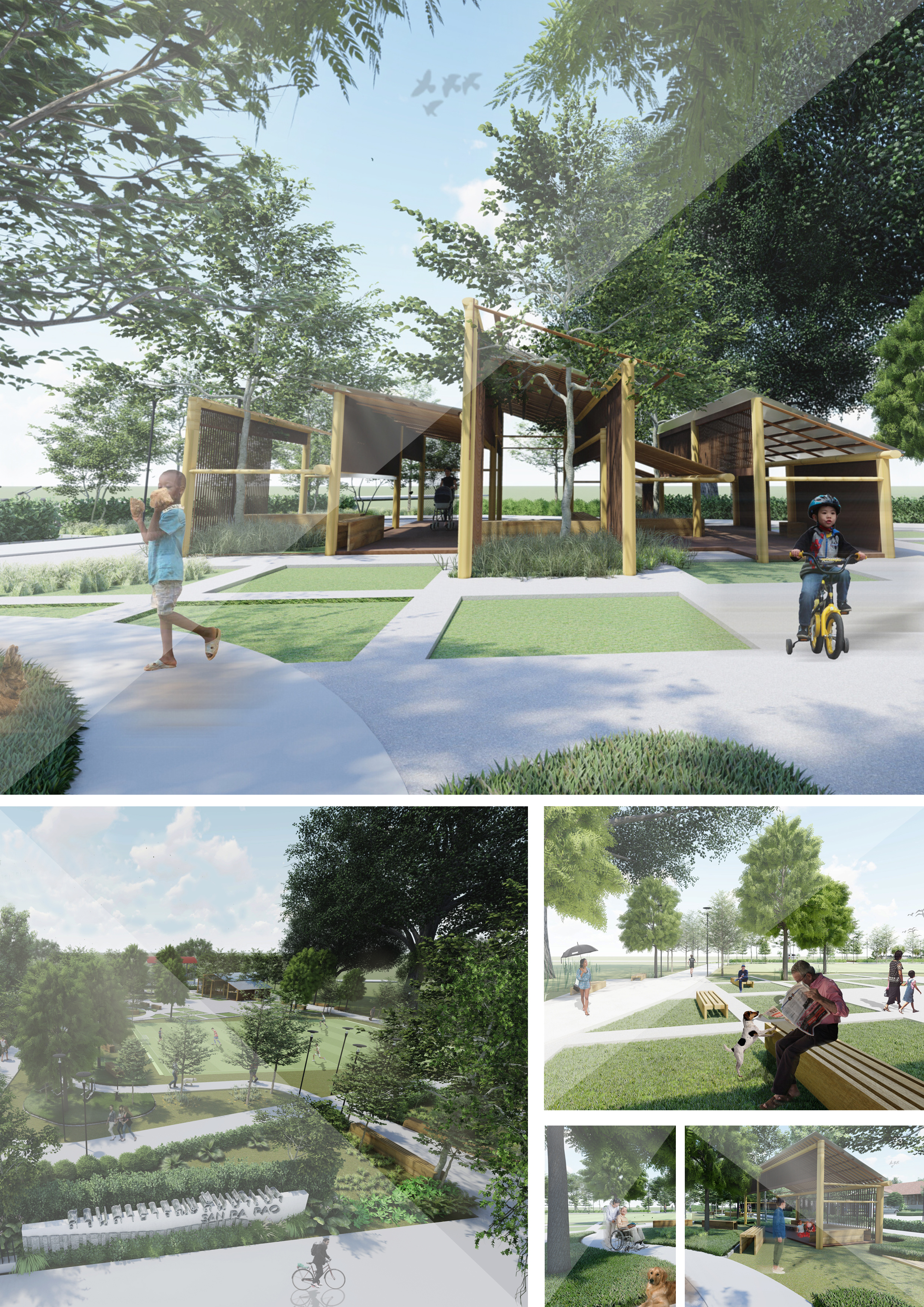การพัฒนาพื้นที่สาธารณะเพื่อเสริมสร้างชุมชนเข้มแข็ง: กรณีศึกษา เทศบาลตำบลสันป่าเปา จังหวัดเชียงใหม่
Main Article Content
บทคัดย่อ
งานวิจัยชิ้นนี้เป็นการพัฒนาพื้นที่สาธารณะเทศบาลตำบลสันป่าเปา อำเภอสันทราย จังหวัดเชียงใหม่ โดยใช้กระบวนการออกแบบโดยยึดผู้ใช้เป็นศูนย์กลาง และการออกแบบอย่างมีส่วนร่วม เพื่อเป็นพื้นที่สาธารณะของชุมชน ที่สามารถช่วยเสริมสร้างความสัมพันธ์ และเสริมสร้างชุมชนเข้มแข็ง ผลการวิจัย พบว่า กระบวนการดังกล่าวสามารถตอบโจทย์ความต้องการของชุมชนได้ เป็นการออกแบบโดยคำนึงถึงความต้องการของผู้ใช้งานเป็นหลัก และเน้นการแก้ปัญหาในพื้นที่ ทำให้เกิดความสัมพันธ์อันดีในระหว่างคนในชุมชน ส่วนราชการภาครัฐ ผู้วิจัยดำเนินการวิจัย โดยผลลัพธ์ที่ได้เกิดเป็นแนวทางการออกแบบผังแม่บทพื้นที่สาธารณะของเทศบาลตำบลสันป่าเปาที่สร้าง และพัฒนาพื้นที่ให้เกิดประโยชน์สูงสุด ทั้งด้านการดำเนินงานราชการ การส่งเสริมคุณภาพชีวิตที่ดีของผู้อยู่อาศัยในชุมชน การส่งเสริมกิจกรรม และการสร้างสิ่งแวดล้อมที่พึงประสงค์แก่ชุมชน โดยการสร้างพื้นที่สาธารณะให้เอื้อต่อการใช้งานของคนในชุมชน และพื้นที่ช่วยเสริมสร้างชุมชนให้เกิดความเข้มแข็งได้
Article Details
เอกสารอ้างอิง
Embassy of the Kingdom of the Netherlands & Natural Resources and Environmental Policy and Planning (2010). Mueang Srikeaw: karn banthao monlaphit samrab Mueang Chiang Mai. (In Thai) [Urban green: relief for the city with focus on Chiang Mai, Thailand]. Retrieved January 15, 2021, from https://edepot.wur.nl/157911.
Sukolratanametee, S. (2015). Ongprakop nai karn oakbab saphabwaetlom tee chuai song soem kwamrusuek pen suan nueng khong chumchon. (In Thai) [Enhancing sense of community through enviromental design elements]. NAJUA: Architecture, Design and Built Environment, 29(1), 475-488.
Barcellini, F., Prost, L. & Cerf., M. (2015). Designers and users roles in participatory design: What is actually co-designed by participants. Journal of Applied Ergonomics, 50, 31-40.
Goodsell, C.T. (2003). The concept of public space and its democratic manifestations. The American Review of Public Administration, 33 (4), 361-383.
Turan, S. Ö., et al. (2016). User evaluation of the urban park design implementation with participatory approach process. Procedia Social and Behavioral Sciences, 216, 306 – 315.


